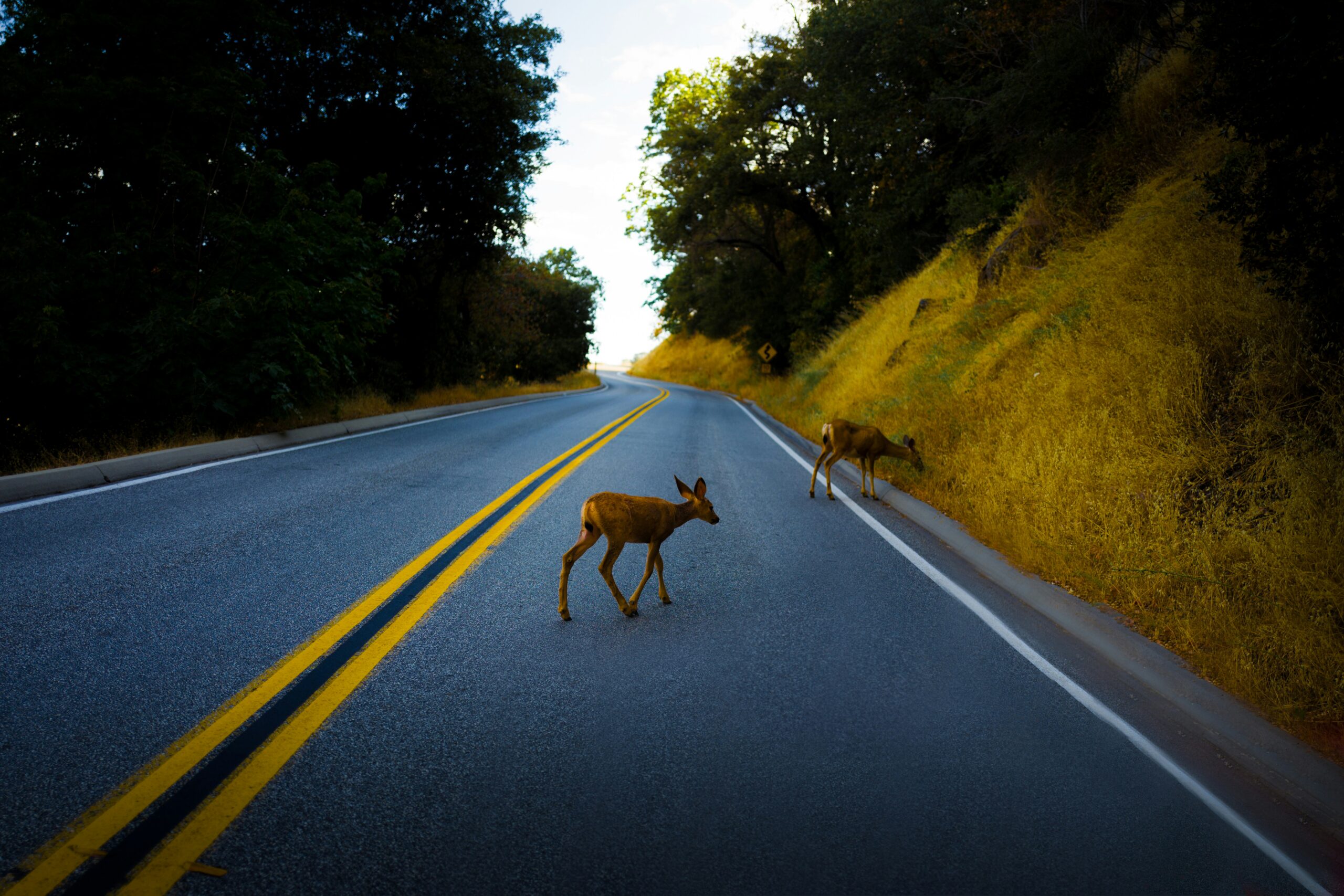
Policy Update
New Jersey Joins a Growing List of States to Establish a Wildlife Corridor Action Plan
August 19, 2025
Overview
On June 30, 2025, New Jersey enacted S. 3618 / A. 4926, requiring the New Jersey Department of Environmental Protection (DEP) and Department of Transportation (DOT) to establish a Wildlife Corridor Action Plan (WCAP). The WCAP will include recommendations for wildlife-friendly transportation projects, and the bill provides $90,000 in funding to support these efforts. This bipartisan bill was sponsored by State Senators Linda Greenstein and Bob Smith, and State Assemblymember Clinton Calabrese.
- Why It Matters: Habitat fragmentation from roads and other infrastructure is one of the primary drivers of biodiversity loss in the United States. The movement of wildlife across roadways results in 1 to 2 million collisions, 26,000 injuries, and $8 billion in damages per year. WCAPs are a proven approach for responding to fragmentation by conducting a statewide analysis of habitat connectivity and barriers to wildlife movement. New Mexico (2019), Oregon (2019), and Virginia (2020) have all created WCAPs, resulting in prioritization and construction of wildlife crossings that reconnect habitats. Crossings offer many co-benefits, including reducing wildlife-vehicle collisions, mitigating the impacts of climate change, and enhancing outdoor access. They quickly pay for themselves through savings on medical costs, property damage, and lost wildlife.
Key Components of the Bill
New Jersey S. 3618 / A. 4926 will improve habitat connectivity and public safety in several ways, including by requiring the following:
- Study: The bill requires a study to be conducted to identify wildlife corridors, wildlife-vehicle collision hotspots, and barriers to wildlife movement along these corridors.
- Prioritization: The WCAP must include criteria for prioritizing crossing projects that promote motor vehicle driver safety and wildlife connectivity.
- Building on Existing State Resources: The bill allows for the incorporation of relevant state databases and existing conservation strategies, including those from the State Wildlife Action Plan and DEP’s “Connecting Habitats Across New Jersey” project.
- Future Impacts: The bill requires the consideration of wildlife corridor impacts in future road transportation projects, including strategies to mitigate these impacts.
- Coordinated Action: The WCAP will be spearheaded by the Department of Environmental Protection and the Department of Transportation with support from other state agencies and independent authorities, federal agencies, as well as conservation, environment, and wildlife groups.
State Context: Wildlife Corridors and Biodiversity Conservation in New Jersey
New Jersey S. 3618 / A. 4926 builds on a public-private partnership called Connecting Habitats Across New Jersey (CHANJ), which is spearheading numerous connectivity projects across the state. The bill also complements an amendment to New Jersey’s Flood Hazard Area Control Act regulations adopted in 2016, which requires applicants to take actions to protect wildlife before the New Jersey DEP will issue permits needed to construct or reconstruct new bridges or culverts.
In Their Words: Bill Sponsors
- Senator Linda Greenstein: “Between October and December 2018, 5,271 motor vehicle collisions in New Jersey were caused by deer crossings. In 2019, four individuals died from such collisions,” said Senator Greenstein. “This bill will have a real impact on the safety of drivers by significantly lowering the rate of animal collisions in the state.”
- Assemblymember Clinton Calabrese: “With the signing of this law, New Jersey is taking meaningful, science-based action to protect both drivers and wildlife,” said Assemblyman Clinton Calabrese, Chair of the Assembly Transportation and Independent Authorities Committee. “Developing a statewide Wildlife Corridor Action Plan is a smart, forward-looking investment in public safety, environmental resilience, and fiscal responsibility.”
Partner Spotlight: The Nature Conservancy New Jersey
NCEL worked closely with TNC New Jersey over the last several years to share how other states are supporting wildlife corridors and crossings.
“This legislation is about reimagining how we build a future where nature and people can thrive side by side. With New Jersey rapidly approaching buildout, we have a narrowing window to ensure development happens in a way that protects our natural landscapes and critical corridors for safe wildlife migration,” said Phil Echevarria, Director of Government Relations for The Nature Conservancy in New Jersey. “By planning for connectivity now, we can reduce costly collisions, protect biodiversity, and strengthen the open spaces we’ve worked so hard to preserve. These steps move New Jersey toward a future that balances growth with long-term ecological resilience.”
Other State Action on Habitat Connectivity in 2025
So far this year, at least 26 states have introduced 52 bills related to wildlife corridors and crossings. Some of the policies introduced include:
**Indicates bipartisan support
- Corridor Conservation: **Indiana HB 1447 would require the designation and protection of important forest and habitat areas.
- Funding for Wildlife Crossings: New Mexico HB 2 appropriates $50 million for wildlife crossing projects.
- Mitigating Energy Infrastructure Impacts: Colorado HB25-1292 would mitigate the impacts of transmission lines on wildlife habitat, while Texas HB 553 would do the same for renewable energy generation facilities.
- Transportation Planning: **Oregon HB 2978 incorporates wildlife mitigation into highway design standards through coordination between the state transportation and wildlife agencies.
- Land Use Planning: **Colorado HB25-1093 allows localities to restrict the development of land that is adjacent to wildlife crossing structures.
- Aquatic Connectivity: Maine LD 836 proposes a $50 million bond issue for municipal culvert upgrades that connect habitat and improve resilience to extreme weather.
Stay Up To Date on Habitat Connectivity Policy With NCEL
Stay current on wildlife and habitat connectivity policy trends across the country with NCEL’s Bill Tracking Map and Habitat Connectivity Issue Page.